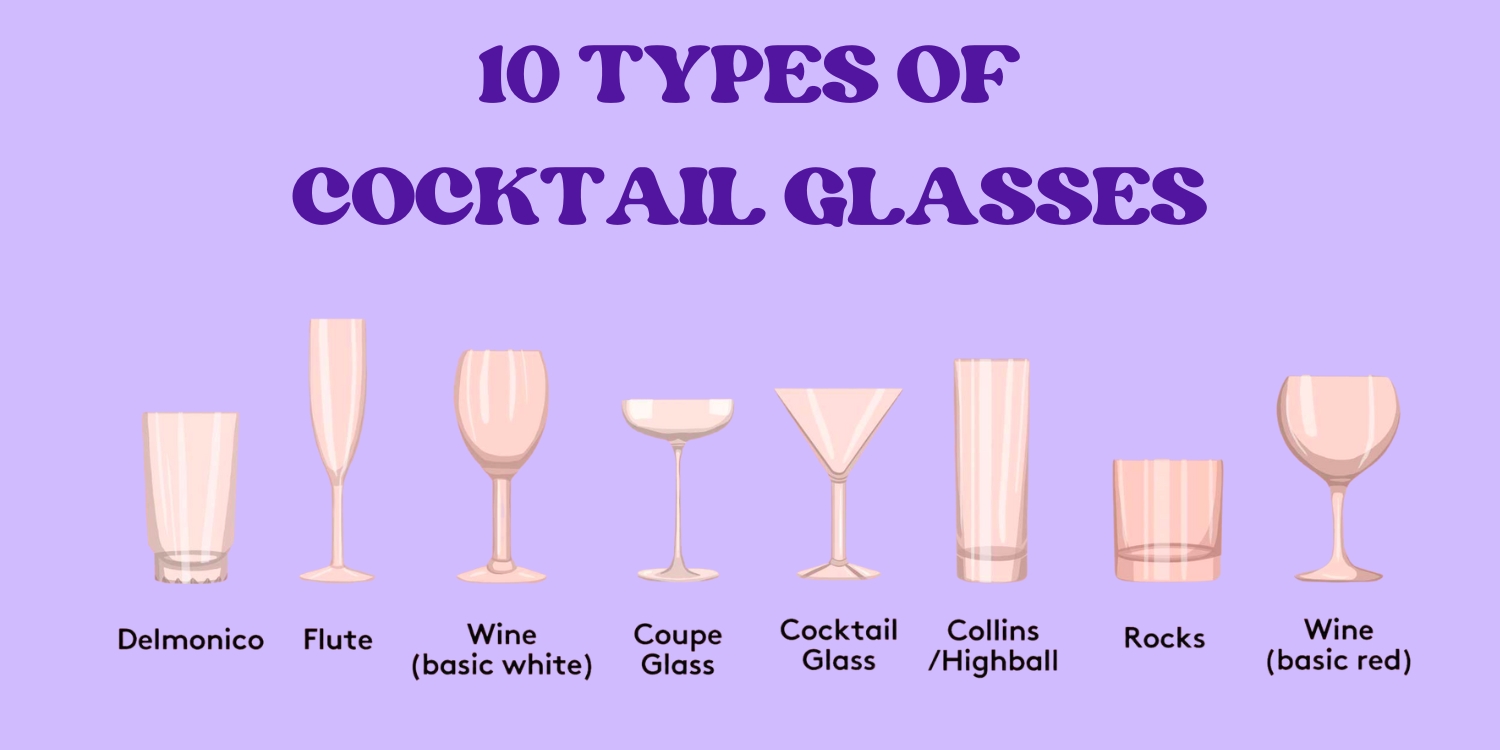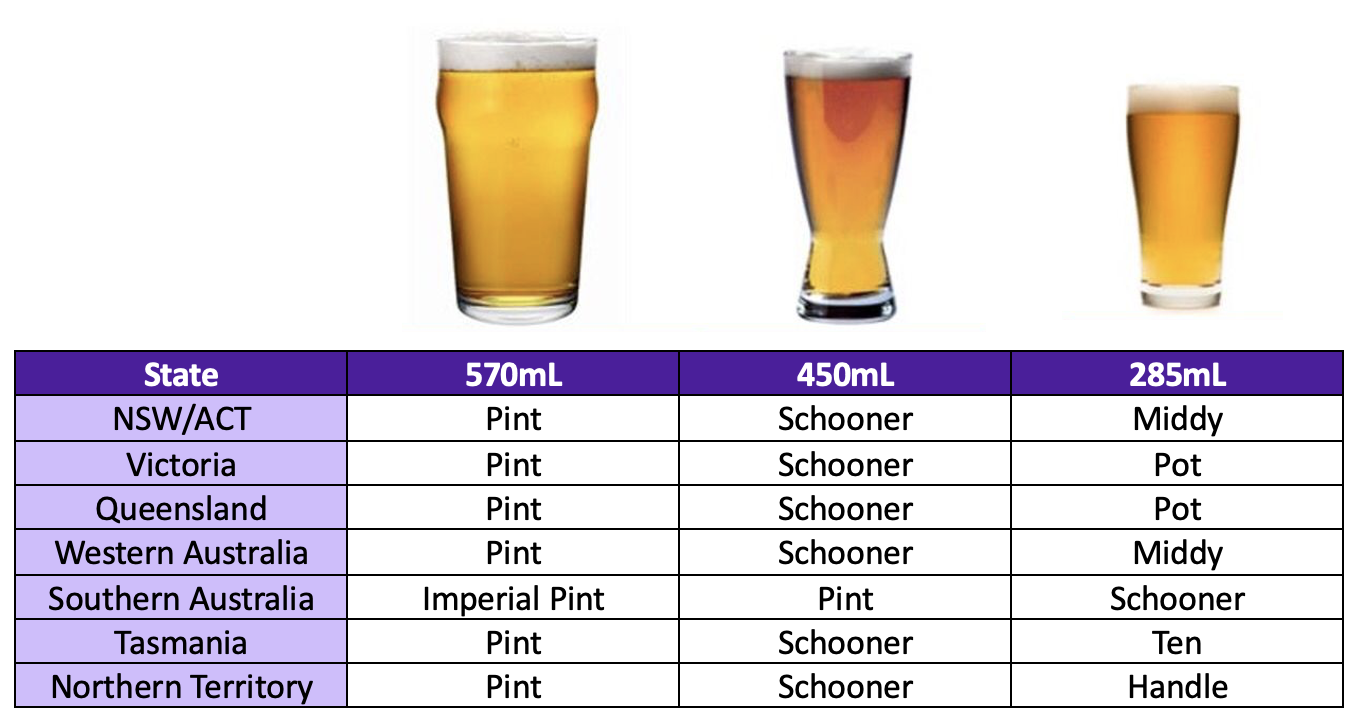Bartender 101 - The Basics of Being a Bartender
Jun 22, 2023

So you want to be a bartender? Then you’ve come to the right place, here’s the rundown of all the bartender basics you’ll need to know before getting started from what to garnish the basic drinks with, how the different beers are, drink sizes, basic cocktail recipes, some drink lingo and hospo lingo so you’re fully in the know.
So first up, what does a bartender do?
A bartender works in a restaurant, bar, hotel, club or other establishment, mixing and serving drinks to customers. Most bartenders also assist in maintaining product inventory and supplies for the bar where they work, for example getting more glasses from BOH, grabbing drinks from the cellar and even changing kegs.
Types of glasses
One of the first things your venue will teach you is their names for their glasses, but they’re pretty stock standard across the board (with a few variations between states).


Different liquors, their common garnishes and cocktails.
Here are a few basic alcohol terms that you need to know:
- Whiskey is made from fermented grain mash. Some examples of whiskey include scotch, bourbon, and rye. This is often ordered on its own or with a mixer like coke, most commonly garnished with a lemon, but whiskey drinkers typically care more about their garnish so i’d always ask if they’d like one or not. A common whiskey cocktail is an old-fashioned or a whisky sour.
- Vodka is made from fermented potatoes or grains. Vodka is typically clear and has a neutral flavour. Often ordered with soda water (lime garnish), coke (lemon garnish), lemonade (lemon garnish) or even lemon, lime and bitters. Some common vodka cocktails are cosmopolitan, martinis, and moscow mule.
- Gin is made from fermented juniper berries. Gin is typically clear and has a slightly sweet flavour. Often served with tonic or soda water. The garnish often depends on the gin, for a normal house gin it’s typically a lemon slice/wedge, see here for more on gin and typical garnishes. Common gin cocktails include a tom collins, martini and the negroni.
- Tequila is a distilled beverage made from the blue agave plant. Often asked for by itself or soda water with a lime garnish. Common tequila cocktails are margaritas, tequila sunrises, and a paloma.
- Rum is made from fermented sugarcane juice or molasses. Rum is typically brown and has a sweet flavour. Often asked for with coke and a lemon garnish. Common rum cocktails include the mojito, pina colada, mai tai and daiquiri’s.
Beers.
When first serving beers I had customer’s asking questions like “what lagers have you got?”, and i had no clue what a lager even is. So here’s the main different types of beer: stout, lager, pilsner, ale, pale ale, IPA’s, sours and many more. See here for Time Magazine’s rundown on what each of these beers are, and how to talk about them like a pro. One of the first things to do when you start as a bartender is learning your beers on tap, and knowing which ones are lagers, pale ales, etc. I’d also try learn what you mid-strength and low-strength beers are.
Some bartender lingo to learn:
When customers order something:
- “Dry” = with Ginger Ale mixer, for example, a “CC dry” is a Canadian Club and Ginger Ale with a lime
- “Neat” = no ice, for example, a “tequila neat” is their choice of tequila served by itself.
- “On the rocks” = With just ice, for example “Whisky on the rocks” is their choice of Whisky served with a few ice cubes.
- For Martini’s: “Dirty” is a martini with olive juice, and “Dry” a martini with a little vermouth.
- A “screwdriver” is just vodka with orange juice as the mixer.
Lingo behind the bar
- BOH = Back of house, often where the dishwasher is with spare glasses etc
- Cellar = Where the stock of alcohol will be with the kegs
- “Backs” = When someone yells “backs” when passing behind you in the bar, it’s basically just warning you that they’re behind you, often with freshly poured beers or a rack of glasses, basically just don’t move till they’re gone.
Tools of the trade
- Cocktail strainer is used to strain ice out of the cocktail shaker
- Cocktail spoon is used to stir a cocktail like a martini, old fashioned or mojito
- Jigger is used to measure shots
The next steps
First step of becoming a bartender is applying for bartender jobs. See here for venues looking for bar staff atm, and filter by your location to start applying for ones that suit you.
Once you’ve got the job
Start learning the basic cocktails/most popular cocktails ordered at your venue, for example: Mojito, Margarita, Cosmopolitan, Long Island Iced Tea, Espresso Martini, Martini, Old Fashioned, etc. Make sure to keep the basics of customer service in mind, be polite, friendly and respectful. Customers want to feel welcome and appreciated, so make sure to smile and make eye contact. If you don’t know the answer to a question, don’t be afraid to ask for help!
So good luck! I’m sure you’ll smash it out there.


